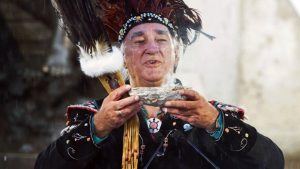Ed Yong in The Atlantic:
 Scheib and her colleagues ultimately analyzed DNA from the remains of 91 people, who lived in California’s Channel Islands and southwestern Ontario, between 200 and 4,800 years ago. And their study both confirms and complicates the existing story of how the Americas were peopled.
Scheib and her colleagues ultimately analyzed DNA from the remains of 91 people, who lived in California’s Channel Islands and southwestern Ontario, between 200 and 4,800 years ago. And their study both confirms and complicates the existing story of how the Americas were peopled.
The team found evidence of two distinct lines of Native American ancestry, which separated after the Americas were first peopled. These lineages, known as ANC-A and ANC-B, roughly correspond to the southern and northern groups that had been previously identified. ANC-A is the southern branch, and includes Anzick-1 and the Clovis culture. ANC-B is the northern branch, and includes the ancient Ontarians and modern Algonquians. But the split between these groups was neither neat nor absolute. “We kept getting really weird answers and it took a while to figure out what they meant,” Scheib says.
More here.
